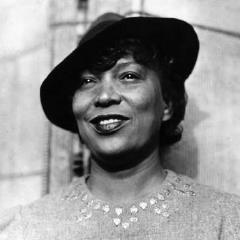Culture and RecreationHarlem Renaissance |
What were the lasting effects of the Harlem Renaissance? |
The Harlem Renaissance (1925–35) marked the first time that white Americans (principally intellects and artists) gave serious attention to the culture of African Americans. The movement, which had by some accounts begun as early as 1917, was noted in a 1925 New York Herald Tribune article that announced, “We are on the edge, if not in the midst, of what might not improperly be called a Negro Renaissance.” The first African American Rhodes scholar, Alain Locke (1886–1954), who was a professor of philosophy at Howard University, led and shaped the movement during which Upper Manhattan became a hotbed of creativity in the post-World War I (1914–18) era.
Not only was there a flurry activity, but there was a heightened sense of pride as well. The movement left the country with a legacy of literary works including those by Jean Toomer (his 1923 work Cane is generally considered the first work of the Harlem Renaissance), Langston Hughes (“The Negro Speaks of Rivers,” 1921; The Weary Blues, 1926), Countee Cullen (Color, 1925; Copper Sun, 1927), Jessie R. Fauset (novelist and editor of The Crisis, the journal of the National Association for the Advancement of Colored People, or NAACP), Claude McKay (whose 1928 novel Home to Harlem evoked strong criticism from W. E. B. Du Bois and Alain Locke for its portrayal of black life), and Zora Neale Hurston (the author of the highly acclaimed 1937 novel Their Eyes Were Watching God, who was the first black woman to be honored for her creative writing with a prestigious Guggenheim Fellowship).
The Harlem Renaissance was not only about literature: jazz and blues music also flourished during the prosperous times of the postwar era. During the 1920s and 1930s Louis Armstrong, “Jelly Roll” Morton, Duke Ellington, Bessie Smith, and Josephine Baker rose to prominence. Their contributions to music performance are still felt by artists and audiences, regardless of color, today.

